Portable Greenhouses, Beetle Matchmaking, & Investigating Plant-Insect Relationships
By Margaret Donnan ’22
My name is Margaret Donnan, and I spent my summer investigating the relationship between the longhorned milkweed beetle (Tetraopes tetrophthalmus) and the common milkweed plant (Asclepias syriaca). Common milkweed is an essential food source for the caterpillars of monarch butterflies (Danaus plexippus). Unfortunately, there are immediate concerns about the decline in the monarch butterfly population. The decline in monarchs has been linked to a decline in common milkweed. Additionally, it has raised questions about whether the decline in milkweed could be linked to changes and/or disruptions in milkweed’s growth, generating interest in exploring different factors that could potentially affect milkweed’s growth.
This is where my research with the longhorned milkweed beetle comes in. This beetle spends its larval and adult stages on common milkweed – the larvae eat the roots and the adults feed on the leaves. This feeding means that the beetles affect multiple parts of the plant (both the aboveground and belowground growth) throughout their life cycles; however, not much is known about the impact of the beetle’s feeding on common milkweed. To explore this impact, my summer research project funded by a Green Fee Grant through the Office of Sustainability, focused on the interactive effects of plant size (i.e. age) and longhorned milkweed beetle larval feeding on the growth and resprout potential of common milkweed. I introduced different larval density treatments to plants in different age groups to investigate these interactive effects.
Turning My House into a Greenhouse & Research Facility
My research project was originally supposed to occur in the William & Mary Greenhouse over the summer, but the announcement of the campus closure due to COVID-19 meant the need for a new plan. With the help of my research advisor, Professor Harmony Dalgleish, we made a plan to safely move the experimental milkweed plants already growing in the William & Mary Greenhouse and some necessary lab supplies to my home in western Virginia. I ordered some portable greenhouses, which sat on my back porch and housed the plants until the outdoor temperature got warm enough to support them.
A corner of my dining room became research supply storage, and after a few weeks in the greenhouses, the plants stayed outdoors on my back porch – continuing to grow bigger for my experiment. I used three different age groups of plants for the experiment – one group was started from roots from larger milkweed plants in the William & Mary Greenhouse, one group was started in late February, and one group was started the first week of June.
Beetle Matchmaking & Habitat Creation
In mid-June, I collected adult longhorned milkweed beetles from the field so that they could mate (the part of my research where I serve as a beetle matchmaker), and I could then use the larvae they produced for the experiment. I placed the beetles in ten beetle habitats, which were ventilated rearing boxes containing long grass stems (where the beetles laid their eggs), sand, fresh milkweed leaves, and the beetles. Each box contained approximately twenty stems and between ten and fourteen beetles. My first round of egg incubation proved unsuccessful, likely due to an environment with too much heat and too little moisture. I repeated a second round of beetle collection in mid-July, successfully incubating the eggs and producing the larvae needed for the larval feeding portion of the experiment.
Running the Experiment
In mid-August, I introduced the longhorned milkweed larvae in varying experimental treatments directly to the experimental plants of different ages and allowed them to feed for three weeks. These were the experimental larval treatments: Control – no larvae, Moderate – 6 larvae, and High – 12 larvae. After those three weeks, I harvested the plants and saw many sections of damage on the coarse roots from larval feeding. At the time of each harvest, I measured the plant’s stem heights, counted the number of buds on the roots, and checked for and measured damaged areas. I also bagged the aboveground and belowground tissues for each plant so that I could later weigh them to better quantify plant size.
Next Steps
Now that I and all the lab supplies are back at William & Mary, I will dry and weigh the bagged aboveground and belowground tissues for each plant. I will then analyze the tissue measurements and the other measurements collected at the time of plant harvest to see if I can conclude whether there are interactive effects of plant size (age) and longhorned milkweed beetle feeding on the growth and resprout potential of common milkweed. I am so thankful to Professor Harmony Dalgleish, my lab, and the Office of Sustainability for making this research possible and for helping me think of creative ways to make this project happen from my home! I look forward to analyzing these data and continuing to explore the relationship between the longhorned milkweed beetle and common milkweed and potential conservation implications of this relationship in the semesters to come.

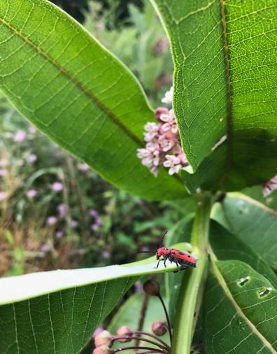
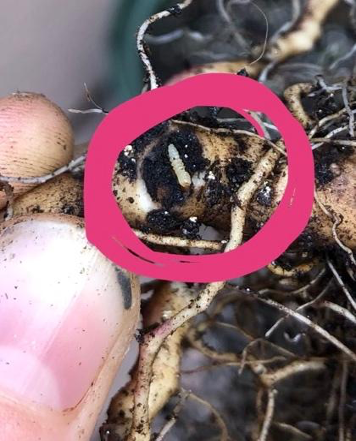
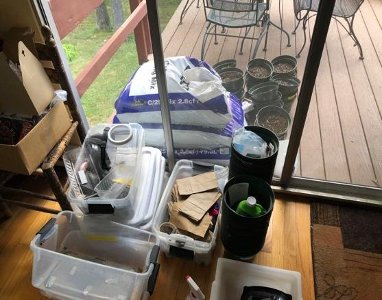


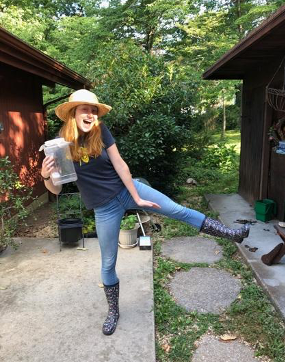
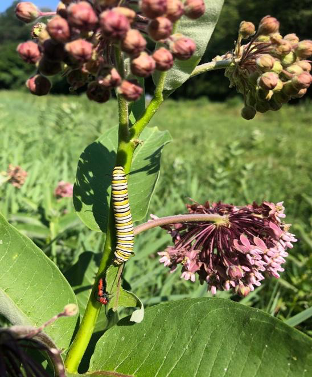

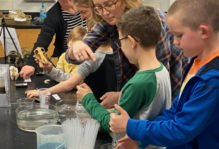
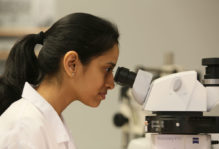
No comments.
Comments are currently closed. Comments are closed on all posts older than one year, and for those in our archive.